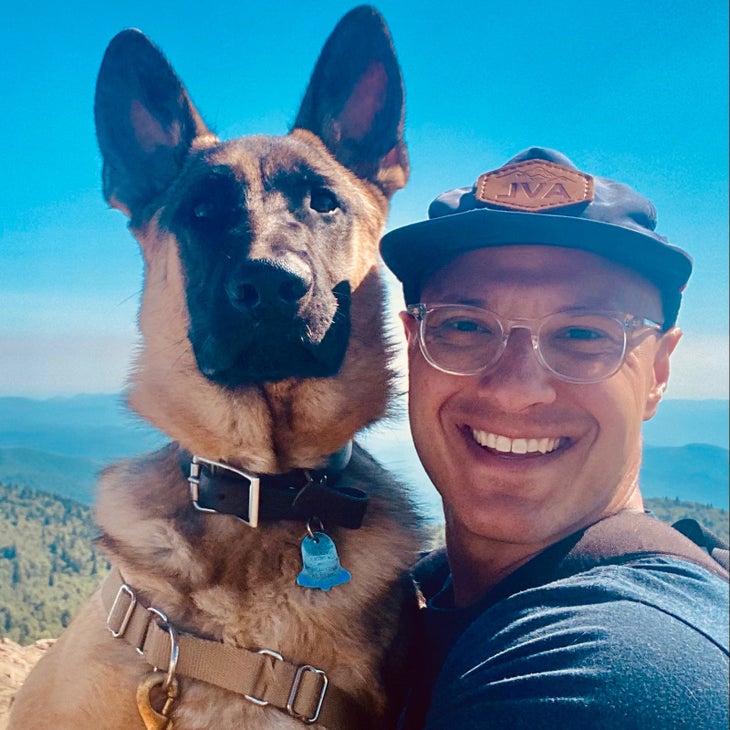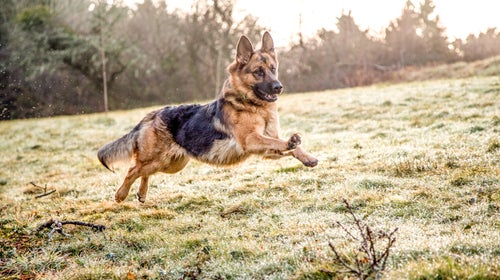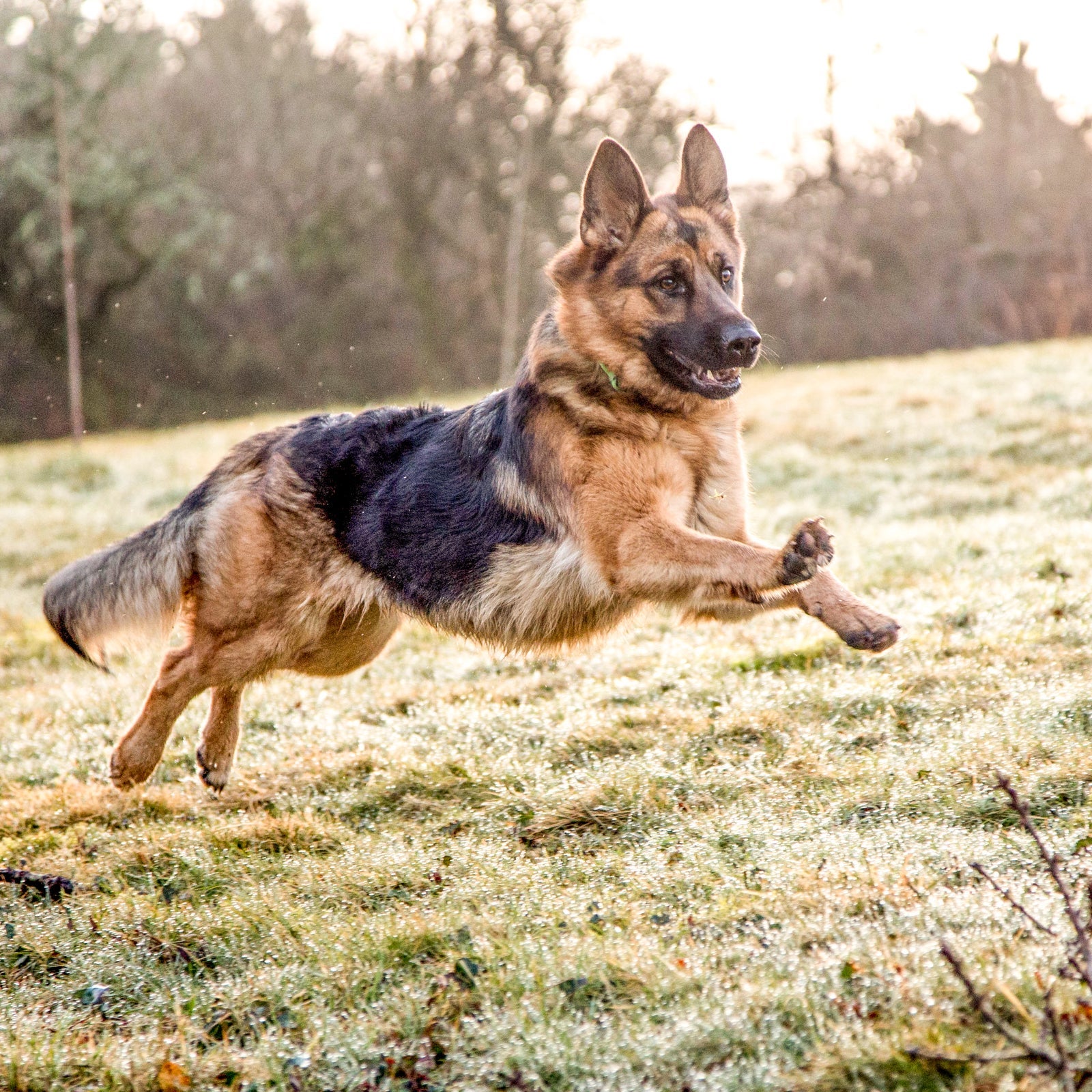Last winter��my family grew by four legs. No, we didn’t have twins. We adopted Ananda, a then seven-week-old German shepherd dog (GSD).
GSDs are great, but they are also a lot of work. When we first got Ananda, my son was just shy of three��years��old. Ananda thought he was a baby sheep and constantly tried to herd him. We also have two cats. He tried to herd them, too.
It was clear that Ananda and I would benefit from some professional coaching. We hooked up with David Kabler, a master trainer with over 25��years of experience and founder of the in our hometown of Asheville, North Carolina. I quickly fell in love with the training process. When I was reflecting on why this might be, it occurred to me that the foundational principles of dog training have much in common with those of human training—be it parenting, developing fitness, or cultivating any other skill. Here’s what we can learn from both.
Be Patient
We all want quick fixes and overnight success, but the truth is that progress, in nearly every endeavor, unfolds over time. “Holding a clear picture of your dog’s training path in your mind—understanding the signals your dog is sending you and reading the signs along the way—will ensure you don’t move too fast and expect too much from your pup,” says Kabler.
The same goes for humans. found that most people have a hot streak in their career, “a specific period during which an individual’s performance is substantially better than his or her typical performance.” The one thing nearly every hot streak has in common? They all rest on a foundation of prior work, during which observable improvement was much less substantial and patience was key to the eventual breakthrough.
Practice Restraint

If you do too much too soon with your dog, they will burn out, just like a human. With Ananda, this meant keeping training sessions compact and taking a long view. The goal is never to do anything heroic in a given day or week; rather, you’ll��develop a solid, well-balanced dog over many months. “In a well-planned training program, there should always be time to allow for leaps of understanding and action,” says Kabler.
Humans mess this concept up all the time. According to 2017 collected by the University of Scranton, only 9��percent of people stick to their New Year’s resolutions for a full year. Most experience a : 73 percent of people maintain their resolution through one week, 68 percent through two weeks, 58 percent through one month, and 45 percent through six months. Why? Because they tend to do too much too soon. It’s far better to meditate for five minutes a day and stick with it than it is to meditate for an hour a day and peter��out.
Stay Consistent
Consistency compounds in nearly everything, and dog training is no exception. “Your dog deserves to have a world that��makes sense to them. By providing consistent training, routines, and behavioral expectations, your dog will gain clear insight about what is expected of them,” explains Kabler.
There were many mornings I didn’t want to train Ananda, and Ananda didn’t want to be trained. But consistency means showing up, even when you don’t want to.
This mindset improves confidence and releases pressure, because you don’t always feel like you’re coming up short. You just need to show up and execute. It also lessens the risk of injury—emotional and physical—since there isn’t a perceived need to put forth massive efforts every day. The result is more consistent performance that compounds over time. Sustainable progress, in everything from diet to fitness to creativity, isn’t about being consistently great; it’s about being great at being consistent. It’s about being good enough over and over again.
Pay Attention
If you want to get better at anything, you’ve got to focus on what is in front of you. It’s hard to know what to do next if you’e��not fully present for what is happening right now, especially in our current climate of novelty and distraction. In this regard, dog training is no different than any other pursuit.
“So much of training is about intuitively responding to your dog,” explains Kabler. “Learning to move in harmony with your dog in training will feed their��natural enthusiasm to��work for you and listen to your requests. Having a rhythm with your best friend helps them to see you as someone to respect and follow,” he says.
Though we often think about harmony and rhythm as naturally occurring, that is not the case. They are developed via consistency, caring, and attention. “As a trainer, it is important to read the dog so that you don’t miss key signs and so that you can respond to the dog in a natural way,” says Kabler.
The same goes for handling a bicycle, riding a wave, growing a garden, or playing the cello. In practice, this means setting aside distraction-free time for full engagement in the activities that are most important to you. In today’s world of endless stimulation, it’s helpful to schedule this time and make it sacred.
Nurture Your Nature
There is an age-old debate between what matters more for progress: nature (inherent talent, aptitude, and temperament) or nurture (environment and learned behavior). The truth, however, is this is a false dichotomy altogether. It’s not nature or nurture. It’s nature and nurture. More precisely, progress is about nurturing your nature—understanding your genetics and then doing what you can to harness them and put them to good use.
In his books and , researcher and writer David Epstein argues that “fit is often more important than grit.” In other words, the key to success isn’t just sticking to a plan; first and foremost, it’s finding a plan that will work for your unique genetics and background for the task at hand.
This is maybe even more important with canines. “Training is a��response to��your dog’s��genetics,” Kabler says. “If I have a naturally shy puppy, I am going to counteract this tendency with extra socialization. If I have a dog with a pronounced prey drive, I will direct that energy into proper outlets and games to give that energy a vessel to live.”
Be Willing to Adapt

Kabler describes his approach to training dogs as having a main plan but being willing to deviate from it when necessary. Dogs get sick and humans get sick. A technique that you thought would work may end up not working at all. Progress depends on knowing when to stick to the path, and knowing when to veer off, and then having the faith and confidence to do so. “Some training paths are different than��others,” Kabler says. “It is important to have as many ways up to the training summit as possible.”
In my own research, writing, and , I call this rugged flexibility: “To be rugged is to be tough, determined, and durable. To be flexible is to adapt and bend easily without breaking. Put them together and the result is a gritty endurance, an anti-fragility that not only withstands change and disorder but can thrive in their midst.” Applying this concept to your own goals is a powerful tool.
Have Fun
I’ve long said that training hard is hard. If you don’t enjoy the process, you probably won’t make it very far. I’ve certainly found this to be true in my work with Ananda. Soaking up the beautiful and brilliant moments makes it a lot easier to keep going during the more challenging ones. Positive reinforcement works a lot better than negative reinforcement. That is, you get more mileage out of rewarding the good than punishing the bad.
It helps to hold things lightly. Experiencing joy , because when things go south, you can look back upon and remember the good, and work toward making more of it in the future. The more you can laugh at your (and your dog’s) mistakes, the more sustainable the training will be. This doesn’t mean you aren’t taking mistakes seriously, learning from them, or correcting them; it just means that you need not beat yourself or your dog up over the occasional misstep or failure. A human’s—and most definitely a dog’s—life is way too short.
Brad Stulberg () coaches on performance and well-being and writes�������ԹϺ���’s��Do It Better��column. He is bestselling author of the books and����and cofounder of��.


